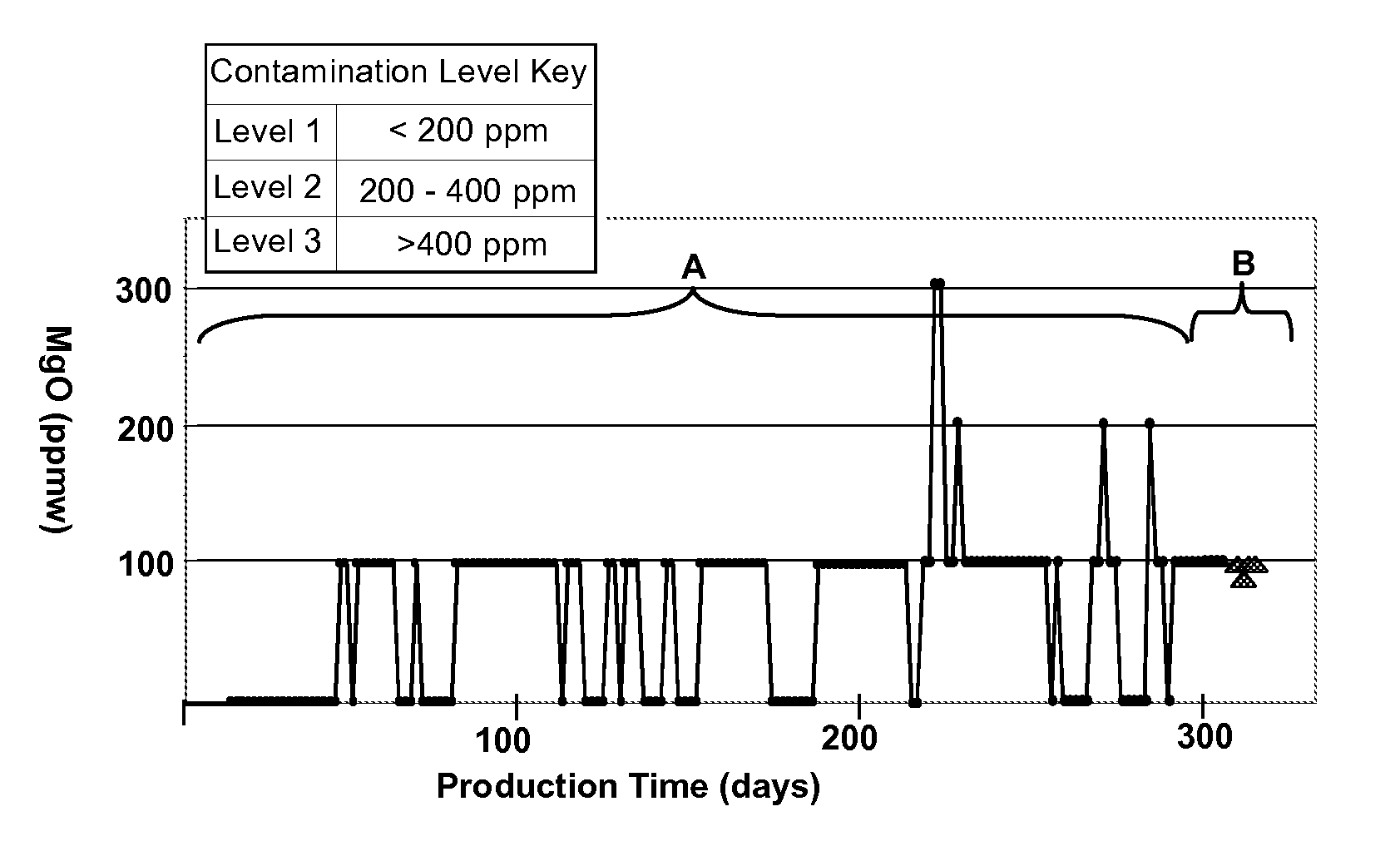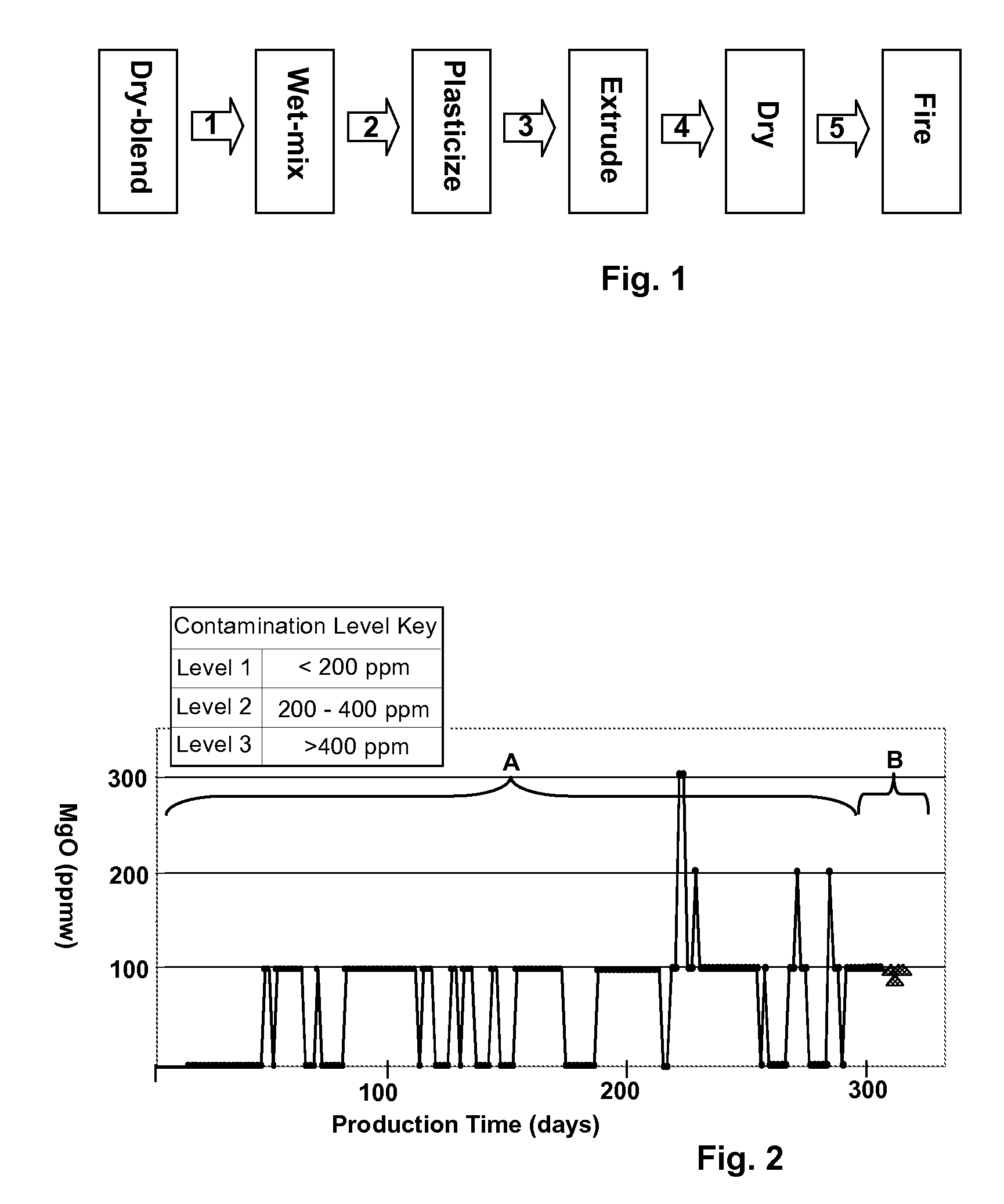Ceramic contamination control processes
- Summary
- Abstract
- Description
- Claims
- Application Information
AI Technical Summary
Benefits of technology
Problems solved by technology
Method used
Image
Examples
example
[0045]To generate data for the development of models correlating cross-contamination levels with the fired properties of cordierite and aluminum titanate ceramic products, a benchmark series of batch compositions for each of these two products is prepared. Known levels of contamination are introduced into each series via small additions of batch material from the other, i.e., small quantities of aluminum titanate batch mixture are introduced into the cordierite series, and small additions of the cordierite batch mixture are introduced into the aluminum titanate series. This method of controlled contamination is appropriate because the contamination of one ceramic precursor mixture being processed in a shared manufacturing environment most typically occurs through contact with residual precursor mixtures from the manufacture of a second ceramic product of differing composition, rather than from the introduction of a single oxide or other compound.
[0046]Each benchmark series of fired ...
PUM
| Property | Measurement | Unit |
|---|---|---|
| Temperature | aaaaa | aaaaa |
| Temperature | aaaaa | aaaaa |
| Percent by mass | aaaaa | aaaaa |
Abstract
Description
Claims
Application Information
 Login to View More
Login to View More - R&D
- Intellectual Property
- Life Sciences
- Materials
- Tech Scout
- Unparalleled Data Quality
- Higher Quality Content
- 60% Fewer Hallucinations
Browse by: Latest US Patents, China's latest patents, Technical Efficacy Thesaurus, Application Domain, Technology Topic, Popular Technical Reports.
© 2025 PatSnap. All rights reserved.Legal|Privacy policy|Modern Slavery Act Transparency Statement|Sitemap|About US| Contact US: help@patsnap.com


